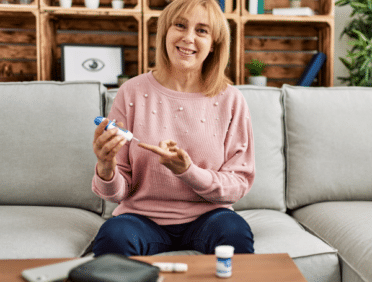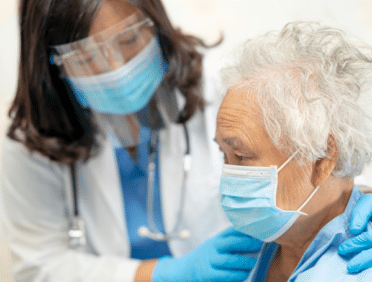When you work in healthcare, there is a good chance that you will come into contact with a variety of possible infection sources. This could be a virus, a bacteria or perhaps just the chance of infection occurring due to bodily fluids or other possible infections.
In order to keep yourself and those around you safe, it is important to understand at least the basics of infection prevention and control awareness.
To help you to understand more on this subject more, let’s take a look at the main things to know about both of these things.
What is the meaning of infection prevention and control?
Infection prevention and control is the practical approach to ensure that both healthcare workers and those that require care are at minimal risk of harm from infections. These are usually procedures that are set out and must be understood and followed by everyone in the workplace, with strict measures and checks in place to ensure that this happens at every point that it should.
The first thing to do when it comes to preventing and controlling infections is to take a step to assess the risk itself. After all, how can you put in place the right measures if you don’t have some understanding of what you are up against?
An infection risk assessment will identify some of the main tasks that are carried out in that particular workplace and whether or not they carry a risk of spreading infection or disease. They should also look at the risk of contamination, not only from things that can be found within the premises but that can also be brought in from the outside world too.
The next step in the risk assessment is looking at who may be most at risk from these infections and what impact this may have on them. This is particularly focused on those who are vulnerable, as there is a good chance that these will be most at risk.
Once you understand the risk and who it may most impact, then you can decide which measures are going to be best to reduce the risk and mitigate the chance of them happening.
Reducing risk
Reducing the risk of infection and contamination is the first step in the risk control and prevention process. The good news is that there are lots of different ways that this can be done, and whilst they do require planning, preparation, and training to be carried out effectively, they are relatively easy to do.
Reducing the hazard
Another thing to do is to reduce the hazard. Of course, you can’t always limit the infections and contaminants that occur within your workplace, but you need to be able to take approaches that are going to limit the chance of them becoming a hazard and impacting those who are in the healthcare setting.
Standard infection control precautions
In order to really get to grips with infection control, there are some standard precautions that should always be put in place. These should be properly identified to all of those within the health care setting and ensure that they understand the part they play in ensuring that they happen.
Hand hygiene
It may sound strange to say it, given that it is such a basic task, but hand hygiene is one of the most important things that you can do to reduce the transmission of infections and contaminants within any healthcare setting.
Not only does it protect each and every patient that you may deal with during your day, but of course, it also protects you too.
You should ensure that you wash your hands properly, for at least 20 seconds, with a good quality anti-bacterial wash. This should be completed every time you see a new patient, visit the toilet or handle any type of food.
You can also use regular hand sanitiser gels on your hands, which will also help to reduce the transmission of infectious materials.
Personal Protective Equipment (PPE)
A lot has been said over the past few years about how vital PPE is for infection control. You only have to see the rise of its use with Covid to see the impact that it has.
PPE comes in a variety of forms, and depending on the work that you do and the setting you work in, you may use all of them at once. These include gowns, gloves, masks and goggles. The idea of PPE is that it creates a physical barrier between the skin and the infectious agents. It particularly focuses on your hands and eyes, as well as your nose too.
PPE is also designed to cover the mouth and ensure that the infectious materials do not find their way onto your clothes.
Respiratory hygiene
Another thing that has become more usual with Covid is respiratory hygiene. Of course, being respectful when it comes to coughs and sneezes is nothing new, but it is definitely something that more of us are aware of and tries to keep to.
Masks have done a lot to ensure that respiratory hygiene is upheld. However, we all should still try to keep on track with our own hygiene. We should always cover our mouths and nose when we sneeze or cough, and even better if we can do this with a tissue.
Tissues should be disposed of straight away when used, and then we should wash our hands or use hand sanitiser if this is not possible to reduce infection.
Sharps safety
The use of needles and other sharp items can have an impact on infection control and possible contamination. This means that sharp safety should always be observed and the main processes and procedures followed.
All sharps that are used should be disposed of in the relevant sharps container; this means that they can then be taken away and dealt with in the correct way.
These containers themselves should be stored in the right way; they should never be stored on the floor, window sills or above shoulder level. It is best if they are stored somewhere between knee level and shoulder level, as this will help to reduce the chance of them being knocked over and the sharps spilling out.
When dealing with the sharps themselves, they should be carried by the handle and away from the body as much as they can. This will reduce the chance of them causing an issue for you and anyone around you.
Safe injection practices
Not only do you need to be careful when it comes to handling sharps after an injection has taken place, but you also need to be careful when it comes to administering injections too.
To keep within safe injection practices, you need to prepare any injections that you are going to be giving in a clean area. You should always disinfect the medication vial and ensure that you are using a fresh and clean needle that has never been used on another patient. It is best to try and use single-dose medication vials wherever you can, as these are the best for infection control.
Sterile instruments and devices
If a medical device is going to come into contact with sterile body tissues or any fluids, then it will be considered to be a critical item within infection control. This means that they should always be sterile when they are used; even the smallest contaminant could have some really serious implications.
Some examples of sterile instruments that should always be a focus within infection control include surgical instruments, biopsy forceps and any medical devices that are implanted.
Clean and disinfected environmental surfaces
Depending on the nature of the place that you work in, it can be hard to ensure that every single environmental surface is clean, but this is an important part of the process and is definitely something that you should try to do as much as you can.
If the surface is contaminated with a fluid or substance that is visible, for example, blood, then you need to ensure that you use an intermediate-level disinfectant to reduce the risk of infection being transmitted. You should also, even when the surface is not visibly soiled, ensure that you use a hospital-grade disinfectant to clean it.
You should always use clean mops and clothes and replace them after every use. Or, if possible, use single-use disposable options to limit the chance of transmission properly.
Management of Blood and Body Fluid Spillage
If you do need to deal with a blood or bodily fluid spillage within your working day, then you need to ensure that these are managed properly. The best way to treat them is with chlorine-releasing agents. The most common of these will be granules.
These granules will soak up the fluid in a way that is going to make it easy to dispose of. If you cannot do this, then you may need to use disposable paper towels over the spillage, this will then absorb it, and you can contain it better.
Management of Occupational Exposure
By following the safety procedures, there is a good chance that you can reduce the risk that staff members will be exposed to occupational hazards during their working day. However, this can and does still happen, particularly at times when the exposure is not expected or prepared for.
Every staff member should be aware of what the correct procedure for them to follow is and receive the correct training to allow them to protect themselves and those around them too.
Conclusion
Infection prevention and control is essential in any healthcare setting. By following the proper procedures and guidelines, healthcare workers can reduce the risk of spreading infections and contaminants to patients and other staff members. It is important to start with an infection risk assessment to identify potential hazards and implement measures to reduce them. The use of personal protective equipment, hand hygiene, respiratory hygiene, safe injection practices, and proper handling of sharps and sterile instruments are critical components of infection prevention and control. Additionally, the proper management of blood and body fluid spillages and occupational exposures is essential for protecting staff members from harm. By understanding and following these procedures, healthcare workers can maintain a safe and healthy environment for everyone in their care.
To download a .pdf of this blog, please click
here












